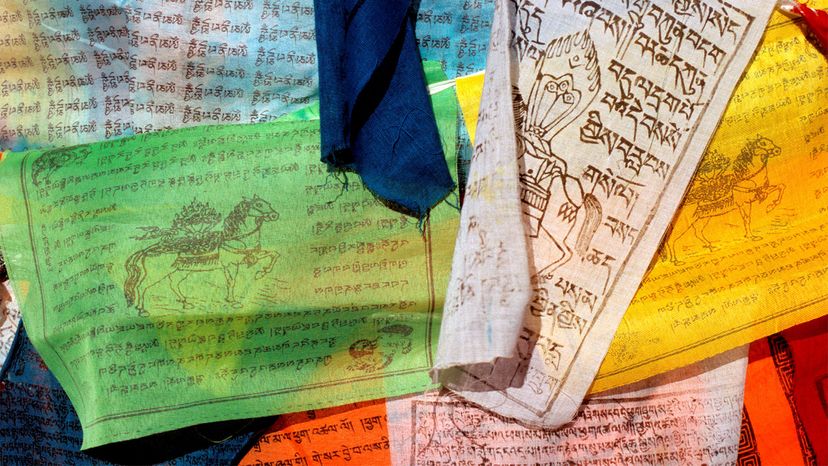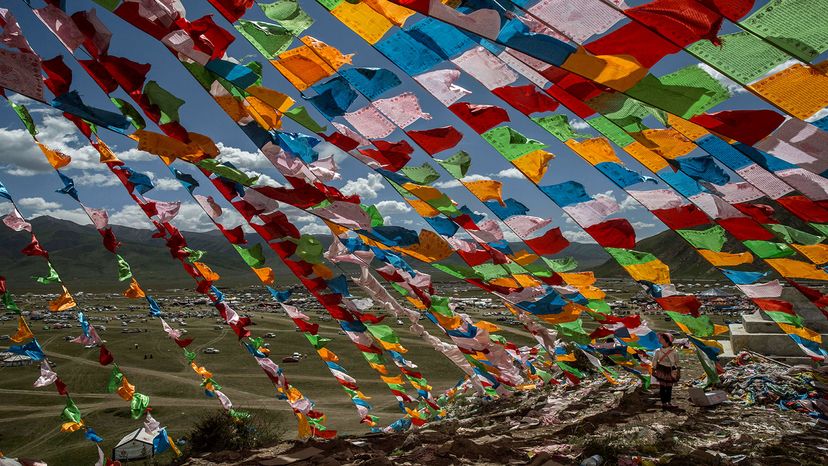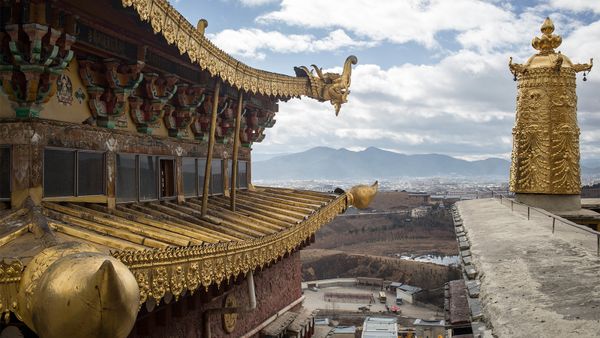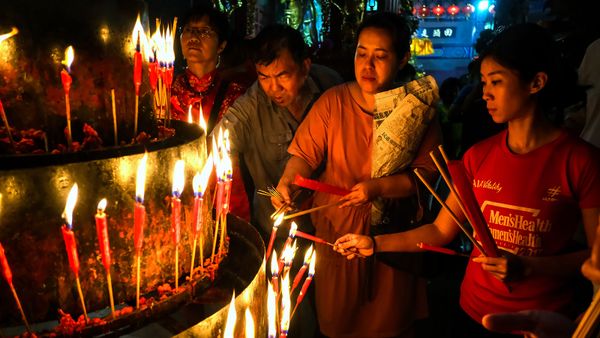
If you ever get a chance to wander the streets of Dharamshala, India — the residence of the Dalai Lama — or Nepal's capital city of Kathmandu, then you'll almost certainly come across at least a few iconic Tibetan prayer flags floating on the breeze. You even may have encountered them somewhere in your daily life.
But just what are these colorful flags fluttering in the wind and what do they signify to the Tibetan people? As we will see, Tibetan prayer flags can symbolize many different things and have a rich, complex history with roots in both Buddhist and ancient Indigenous religious practices.
Advertisement
"The printing and hanging of prayer flags is a Tibetan practice, given the many mountain passes where prayer flags are typically hung," emails Donald S. Lopez Jr., a distinguished professor of Buddhist and Tibetan studies at the University of Michigan and author of the book "Religions of Tibet in Practice."




